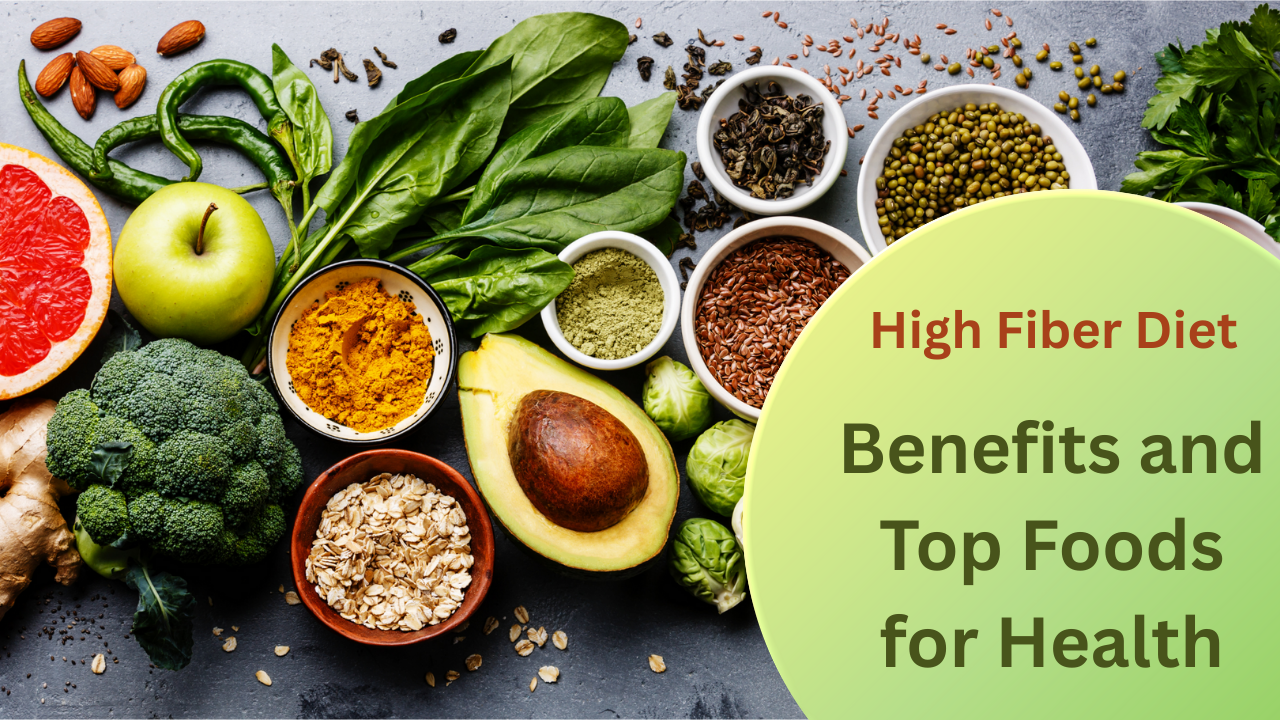A high fiber diet is essential for maintaining good digestive health and overall wellness. Fiber helps move waste through the digestive system, reducing constipation and supporting regular bowel movements. It also promotes a healthy gut by feeding beneficial bacteria, which play a key role in digestion and immunity.
Beyond digestion, a high fiber diet offers protection against chronic conditions like heart disease, type 2 diabetes, and high cholesterol. It helps regulate blood sugar levels and keeps you feeling full for longer, making it easier to manage your weight and avoid overeating. These benefits make fiber an important part of any balanced diet.
Unfortunately, many people fall short of the recommended daily fiber intake. This article will explain the benefits of a high fiber diet in more detail and highlight the top 8 fiber-rich foods you can easily include in your daily meals to improve your health and support your long-term wellness goals.
What is a High Fiber Diet ?
Fiber, often referred to as roughage, is a special type of carbohydrate that the body cannot fully digest. While most carbohydrates are broken down into sugars and absorbed into the bloodstream, fiber passes through the digestive system mostly unchanged. It is naturally found in plant-based foods such as fruits, vegetables, whole grains, legumes, and nuts.
A high fiber diet includes a balance of both soluble and insoluble fibers. Soluble fiber dissolves in water and helps lower cholesterol levels and control blood sugar. Insoluble fiber does not dissolve in water; instead, it adds bulk to your stool, helping food move smoothly through the digestive tract and preventing constipation.
Following a high fiber diet can benefit many aspects of health, from digestion to heart health. It also supports a healthy weight by promoting fullness, which can reduce overeating and snacking between meals.
Health experts recommend about 25 grams of fiber daily for women and 38 grams for men. However, most people fall short of this amount. Increasing your intake of fiber-rich foods can significantly improve your health.
Why is a High Fiber Diet Important ?
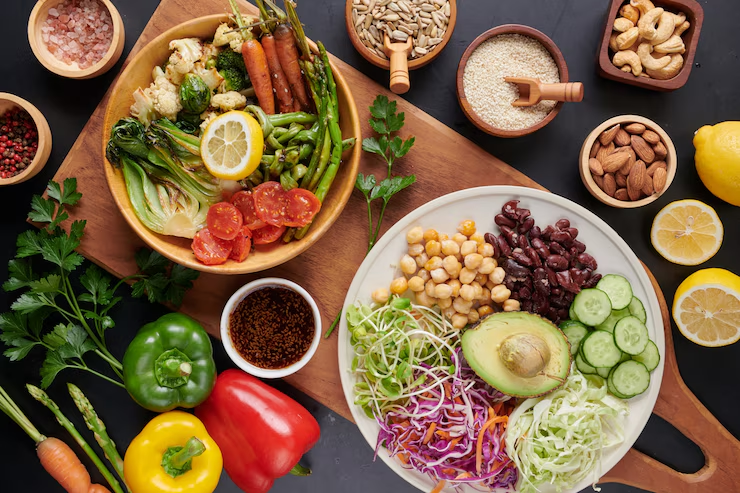
A high fiber diet is not just about improving digestion—fiber plays an integral role in overall health. Here are some of the most important benefits of eating fiber-rich foods:
Improves Digestion and Prevents Constipation: A high fiber diet is great for your digestive system. It helps make stools bulkier and softer, so they pass through the intestines more easily. This helps prevent constipation and promotes regular bowel movements. Insoluble fiber acts like a natural cleaner, keeping the digestive tract clear and active.
Lowers Cholesterol Levels: Following a high fiber diet can help lower bad cholesterol. Soluble fiber in foods like oats and beans binds to cholesterol in the digestive system, reducing how much enters your blood. This helps lower both total and LDL cholesterol, which supports better heart health.
Helps Control Blood Sugar: A high fiber diet can slow sugar absorption, preventing sudden spikes in blood sugar levels. Soluble fiber is especially helpful for people with type 2 diabetes or those at risk. Fiber-rich foods also tend to have a lower glycemic index, which keeps blood sugar more stable.
Aids in Weight Loss and Management: A high fiber diet helps control hunger and manage weight. Fiber keeps you feeling full longer, reducing the need to snack. It slows digestion, helps control cravings, and supports healthy blood sugar levels—all important for weight loss and maintenance.
Supports Heart Health: Eating a high fiber diet can reduce the risk of heart problems. Fiber helps lower blood pressure and cholesterol, supporting better heart function. People who eat enough fiber may have a lower chance of developing heart disease and stroke.
May Help Prevent Some Cancers: A high fiber diet may protect against colorectal cancer by keeping the colon clean and supporting regular bowel movements. Fiber-rich foods also contain nutrients and antioxidants that help reduce the risk of certain cancers.
Promotes Gut Health: A high fiber diet feeds the good bacteria in your gut, helping them grow. This improves digestion, strengthens the immune system, and may even support better mood and brain health. A healthy gut depends on enough fiber every day.
Top 8 High Fiber Foods to Include in Your Diet
Now that we understand the importance of a high fiber diet, let’s take a look at the top 8 high-fiber foods you should consider incorporating into your daily meals.
Legumes (Beans, Lentils, Chickpeas)
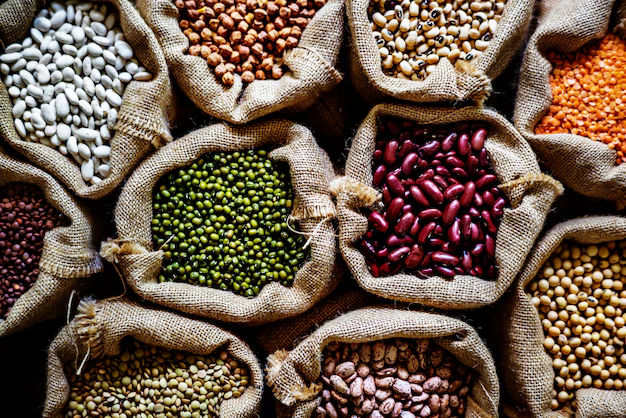
Legumes are one of the top choices when it comes to boosting fiber intake. They include beans, lentils, and chickpeas—all of which are excellent sources of both soluble and insoluble fiber. Adding legumes to your meals can greatly improve the effectiveness of a high fiber diet.
For example, just one cup of cooked lentils contains around 15 to 16 grams of fiber, which is more than half the daily recommended intake for many adults. This makes legumes a smart choice for supporting digestive health and staying full for longer periods.
In addition to fiber, legumes are high in plant-based protein. They serve as a nutritious alternative to meat, making them ideal for vegetarians or anyone trying to eat more plant-based meals. Including legumes in a high fiber diet not only improves digestion but also adds important nutrients to support overall wellness.
How to Add Them:
Add beans or lentils to salads, soups, and stews.
Make homemade hummus with chickpeas.
Blend beans into smoothies for extra fiber.
Whole Grains (Oats, Quinoa, Brown Rice)
Whole grains are an important part of a high fiber diet. They are a rich source of dietary fiber, especially when compared to refined grains. Whole grains keep the bran and germ, which are the parts that hold most of the fiber and nutrients.
Adding whole grains to your meals can help improve digestion and keep you feeling full for longer. For instance, one cup of cooked quinoa provides about 5 grams of fiber, while a serving of oats gives you around 4 grams. These amounts can significantly boost your daily fiber intake.
Including a variety of whole grains such as brown rice, barley, whole wheat, and quinoa in a high fiber diet can support heart health, regulate blood sugar levels, and aid in weight management. Swapping refined grains for whole grains is a simple step toward better health and long-term wellness.
How to Add Them:
Enjoy oatmeal or overnight oats for breakfast.
Use quinoa as a base for salads and grain bowls.
Swap white rice for brown rice or whole grain alternatives.
Berries (Raspberries, Blackberries, Blueberries)
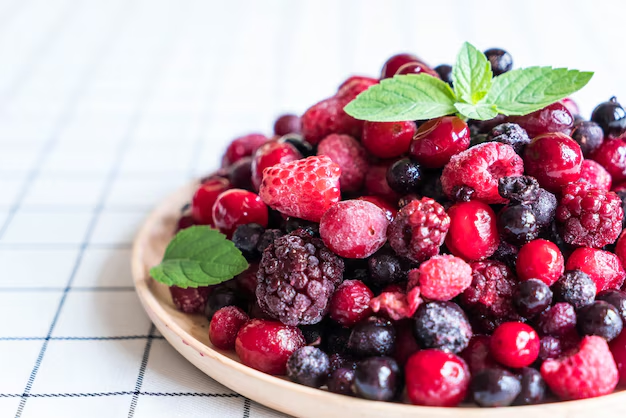
Berries are a tasty and nutritious way to support a high fiber diet. These colorful fruits are naturally rich in fiber, especially when eaten whole with their seeds and skins. Including berries in your daily meals or snacks is a simple way to increase your fiber intake.
Raspberries and blackberries stand out as some of the best fiber-rich berries. One cup of raspberries contains about 8 grams of fiber, while blackberries provide around 7 grams. These amounts make berries an excellent choice for improving digestion and helping you feel full longer.
In addition to fiber, berries are loaded with antioxidants, vitamins, and minerals that support overall health. They help protect the body from cell damage and support the immune system. Adding berries to a high fiber diet not only boosts nutrition but also adds natural sweetness and flavor to your meals.
How to Add Them:
Add berries to yogurt, smoothies, or salads.
Enjoy them as a snack or top your breakfast cereal with them.
Bake them into muffins or bread for a fiber boost.
Avocados
Avocados are a unique and nutritious addition to a high fiber diet. Unlike most fruits, they are rich in both healthy fats and fiber, making them a great option for balanced eating. Their creamy texture and mild flavor also make them easy to add to various dishes.
A single medium avocado contains around 10 grams of fiber, which is a significant boost to your daily fiber intake. This helps improve digestion, supports regular bowel movements, and keeps you feeling full longer—important benefits of a high fiber diet.
Besides fiber, avocados are packed with heart-healthy monounsaturated fats. These fats help reduce bad cholesterol levels and support overall heart health. Including avocados in your meals not only increases your fiber but also adds essential nutrients that benefit your heart and overall well-being.
How to Add Them:
Make guacamole or add slices to sandwiches and salads.
Mash avocado onto whole-grain toast for a fiber-rich breakfast.
Blend avocado into smoothies for creaminess and added fiber.
Broccoli
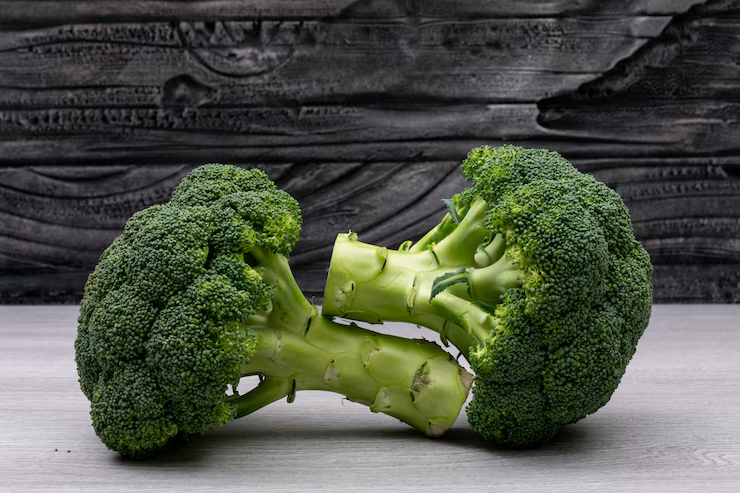
Broccoli is a highly nutritious vegetable and a great choice for anyone following a high fiber diet. It’s packed with fiber as well as important vitamins and minerals that support overall health. Its natural crunch and mild flavor make it easy to include in various meals.
One cup of cooked broccoli provides about 5 grams of fiber. This helps promote regular bowel movements and supports a healthy digestive system. Including broccoli in a high fiber diet can also help manage weight by increasing feelings of fullness.
In addition to fiber, broccoli offers vitamins C and K, folate, and potassium. These nutrients help strengthen the immune system, support bone health, and improve heart function. Adding broccoli to your diet regularly is a simple way to increase fiber while gaining many other health benefits.
How to Add It:
Roast, steam, or stir-fry broccoli as a side dish.
Add it to casseroles, soups, or grain bowls.
Toss it in a salad or use it as a topping for pizza.
Sweet Potatoes
Sweet potatoes are a tasty and healthy way to support a high fiber diet. They are naturally sweet, versatile, and packed with important nutrients that benefit overall wellness. Whether baked, roasted, or mashed, sweet potatoes are a satisfying addition to meals.
One medium-sized sweet potato provides around 4 grams of fiber. This helps improve digestion, supports regular bowel movements, and keeps you feeling full longer. Including sweet potatoes in a high fiber diet can also assist with weight management and digestive health.
In addition to fiber, sweet potatoes are rich in vitamin A, especially in the form of beta-carotene, which supports eye and immune health. They also have a low glycemic index, which means they release sugar slowly into the bloodstream—helpful for maintaining stable blood sugar levels. Sweet potatoes are both nutritious and delicious, making them an excellent choice for a fiber-rich diet.
How to Add Them:
Roast sweet potatoes as a side dish or snack.
Make mashed sweet potatoes with a dash of cinnamon and nutmeg.
Add them to salads or grain bowls for extra fiber and nutrients.
Chia Seeds
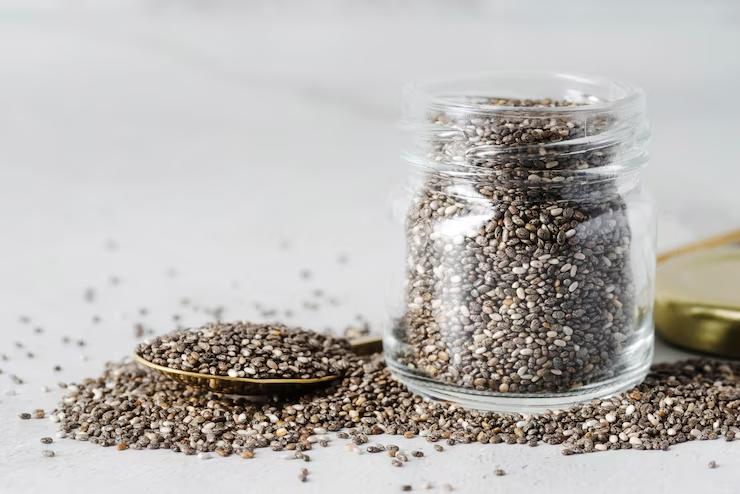
Chia seeds are a powerful superfood that fits perfectly into a high fiber diet. Despite their small size, they are packed with fiber, making them an easy and effective way to increase your daily intake. Chia seeds are also rich in healthy fats, protein, and essential minerals.
Just two tablespoons of chia seeds contain about 10 grams of fiber. This high fiber content helps support digestion, keeps you feeling full longer, and may aid in weight management. Adding chia seeds to your meals can make a big difference in the overall fiber quality of your diet.
Chia seeds are also very easy to use. You can mix them into smoothies, yogurt, oatmeal, or even bake them into muffins. Their ability to absorb liquid and form a gel-like texture makes them useful in many recipes. Including chia seeds in a high fiber diet is a simple step toward better health.
How to Add Them:
Add chia seeds to smoothies, oatmeal, or yogurt.
Make chia pudding by soaking seeds in almond milk overnight.
Sprinkle them on top of salads, toast, or baked goods.
Carrots
Carrots are a healthy and crunchy vegetable that fits well into a high fiber diet. They are easy to include in meals and snacks, whether eaten raw, cooked, or blended into soups and smoothies. Carrots offer a variety of nutrients that support overall wellness.
A medium-sized carrot provides about 2 grams of fiber, which supports digestion and helps keep you feeling full. Including carrots regularly in a high fiber diet can improve bowel movements and contribute to better gut health.
Carrots are also a great source of beta-carotene, which the body turns into vitamin A. This nutrient supports eye health, boosts the immune system, and promotes healthy skin. With their natural sweetness and versatility, carrots are a simple and nutritious way to increase fiber intake and support overall health on a high fiber diet.

How to Add Them:
Enjoy raw carrots as a crunchy snack with hummus.
Roast carrots with olive oil and herbs as a side dish.
Add shredded carrots to salads, soups, or smoothies.
Conclusion
A high fiber diet is one of the easiest and most effective ways to support your overall health. Fiber helps with digestion, supports heart health, controls blood sugar levels, and plays a role in maintaining a healthy weight. It may also help lower the risk of certain types of cancer. Including more fiber-rich foods in your meals can make a big difference in your well-being.
Foods like legumes, whole grains, berries, carrots, broccoli, and sweet potatoes are excellent sources of fiber. By making these part of your daily meals, you can meet the recommended fiber intake and enjoy the many health benefits of a high fiber diet. These foods not only improve digestion but also keep you full and energized.
Increasing your fiber intake doesn’t have to be difficult. Simple changes, like replacing refined grains with whole grains or adding an extra serving of vegetables to your plate, can help you follow a high fiber diet more easily.

FAQs
Q1. What is a high fiber diet ?
A high fiber diet includes foods rich in dietary fiber such as fruits, vegetables, legumes, whole grains, nuts, and seeds. It helps improve digestion and overall health.
Q.2 How much fiber should I eat daily ?
Women should aim for about 25 grams of fiber per day, while men should aim for 38 grams. These amounts support proper digestion and reduce disease risks.
Q.3 What are some easy ways to add more fiber to my diet ?
Start by choosing whole grain products, adding fruits or vegetables to each meal, and snacking on nuts or seeds.
Q.4 Can a high fiber diet help with weight loss ?
Yes, fiber helps you feel full longer, which can reduce overeating and support healthy weight management.
Q.5 Does fiber affect blood sugar levels ?
Yes, fiber slows down sugar absorption, which helps maintain steady blood sugar levels—especially helpful for people with diabetes.


